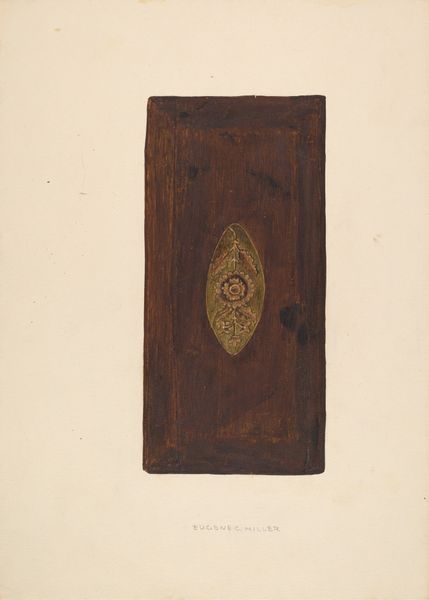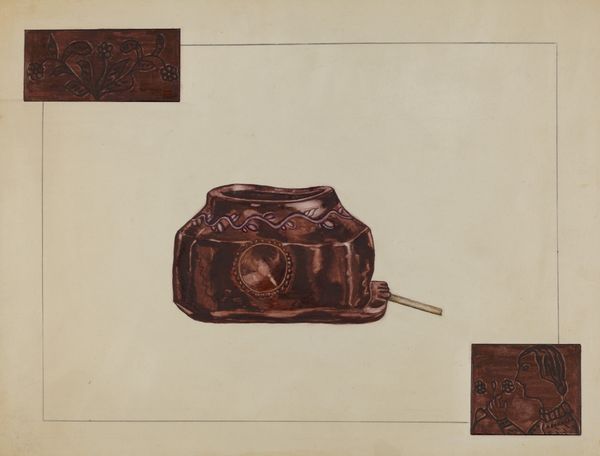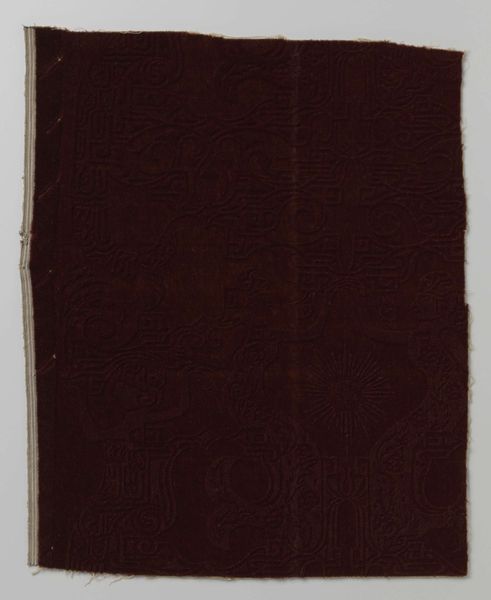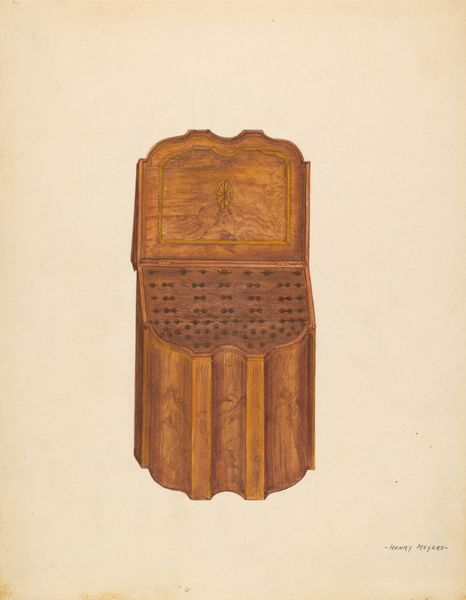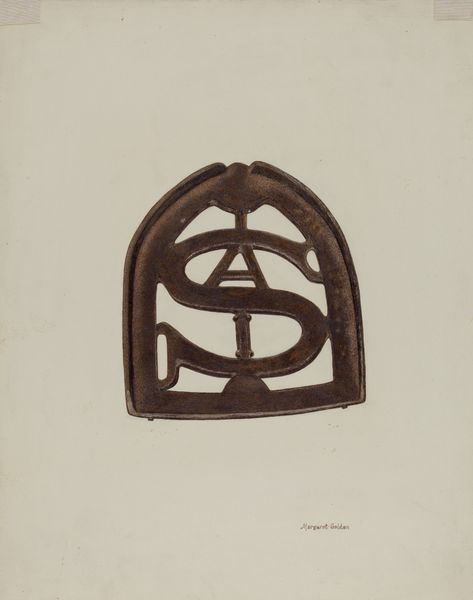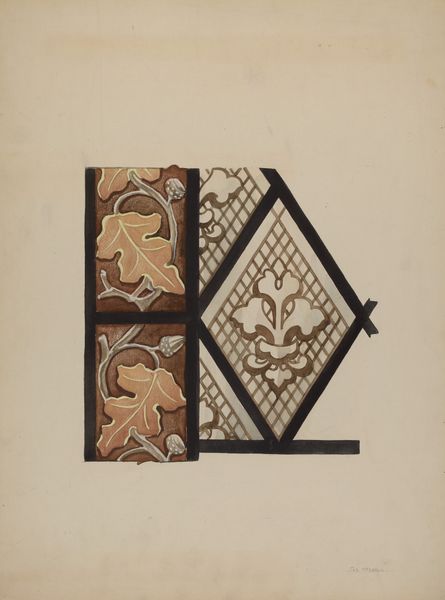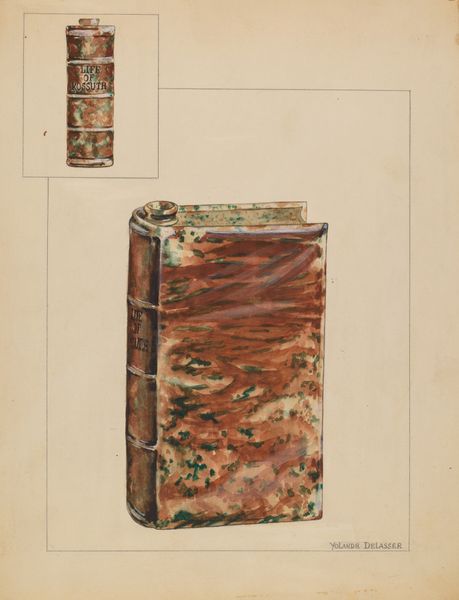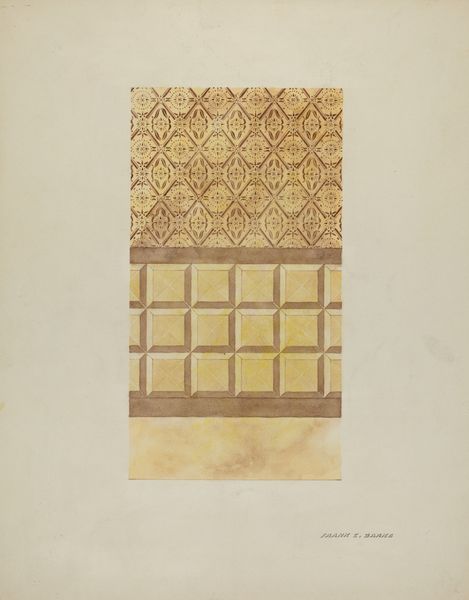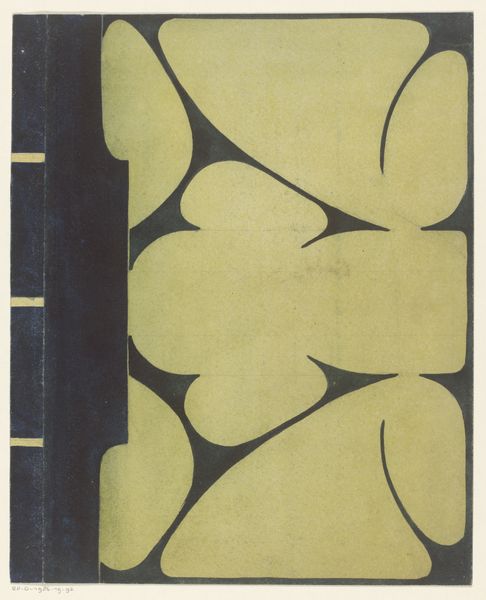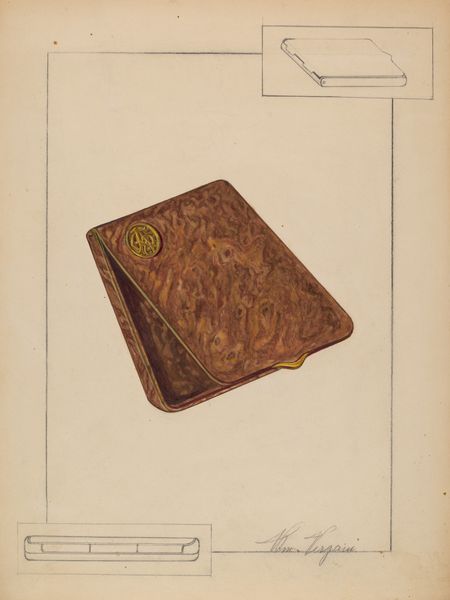
drawing, carving, wood
#
drawing
#
carving
#
wood
#
watercolor
Dimensions: overall: 35.5 x 24.6 cm (14 x 9 11/16 in.) Original IAD Object: 4 5/8" wide; 7 3/16" long
Copyright: National Gallery of Art: CC0 1.0
Editor: This is a "Carved Wood Book Cover" created around 1936. The medium includes drawing, carving, and wood, but I am initially drawn to the geometric intricacy, that hints towards perhaps Celtic or Nordic origins, while still giving off subtle academic vibes. What sociopolitical ideas were the artists expressing through such symbolism at the time? Curator: It’s insightful to consider sociopolitical context here. The rise of carved wood as a medium is worth considering, since certain types of woodwork became newly fashionable among particular communities in the mid-20th century. How might this type of material signify both connection to a specific traditional craftsmanship while simultaneously signalling social progress via this more modern styling? Editor: That's an angle I hadn't considered! I guess I was immediately focused on the image itself; specifically that the drawing looks almost like an attempt to replicate older medieval binding. Curator: Exactly. The “revival” movement can often have strong ties to colonial impulses to seize or appropriate the other cultures they represent, however tastefully, as one facet to larger campaigns of control and possession. The way an artist borrows visual languages from the past also informs our view of any modern political meaning. It makes one consider how such artwork both reflects and perhaps even helps shape these movements? Editor: I can now see the connection to colonialism, but am curious: Is it fair to make the assumption that the cultural origins of this practice are born of oppression? Can this artwork also simply reflect pride? Curator: Absolutely, nuance is essential here, because individual narratives intertwine with sociohistorical events. Instead of asking "is it oppression" we can also probe whether or not a piece perpetuates oppression. Understanding this carving necessitates delving into historical layers alongside any personal perspectives being promoted. Editor: I see; it sounds like to fully contextualize it we have to understand the relationship between these things to offer a fair observation, and understand the piece's role in these dialogues, thank you! Curator: Precisely! Now consider how this resonates with present-day conversations around art, identity, and social change!
Comments
No comments
Be the first to comment and join the conversation on the ultimate creative platform.
